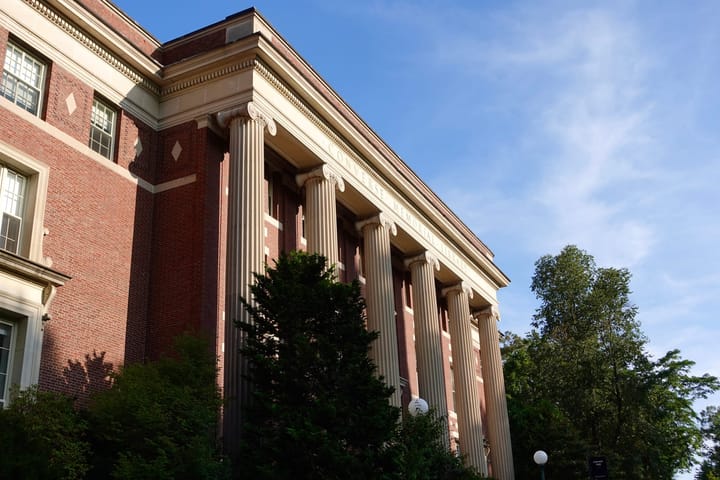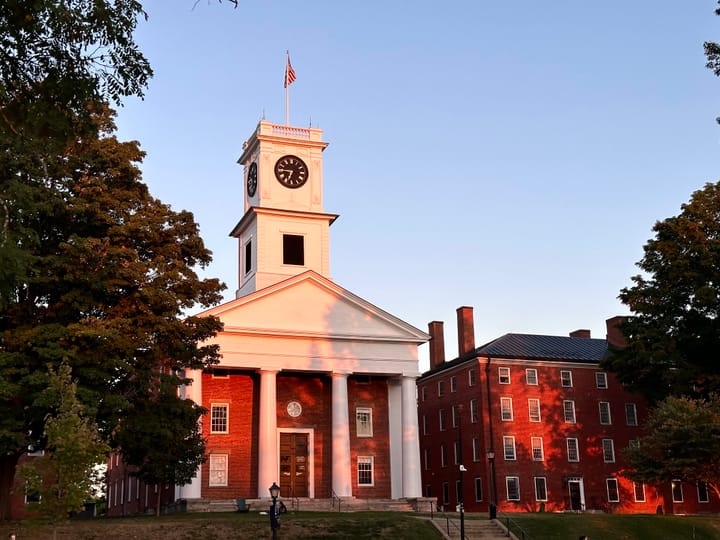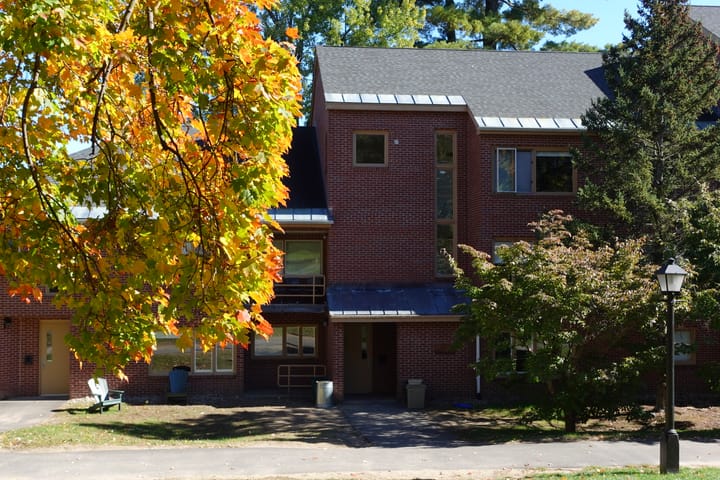Editorial: Fall Festival and Amherst Tradition
The Editorial Board reflects on Amherst’s uneasy relationship with tradition and asks what it would take for Amherst students to reclaim connection on their own terms: to build new traditions that are inclusive, joyful, and genuinely ours.
Sunday afternoon, Amherst students gathered on the First-Year Quad to celebrate one of the most loved and anticipated events of the academic year: Fall Festival.
After the seemingly endless barrage of midterms and gloomy weather before Fall Break, the event — paired with Parents Weekend — was supposed to be exactly what the campus needed. But as we settle back into the normalcy of campus life, a familiar question resurges: Where does all this exciting energy go during the rest of the school year?
Amherst certainly has its share of quirks and customs — the Conway Canes handed to seniors at Commencement, the superstition preventing students from sitting on the War Memorial, the moose statue in Frost Library — but few of these feel like traditions in the lived sense. They feel more like rare gestures and remnants of an older Amherst rather than practices that shape our everyday life. They don’t make us feel like we’re truly connected with our peers, instead just actions we might take and superstitions we might observe.
We don’t chant fight songs at football games, nor do we have robust pep rallies like many of our peer institutions do. Besides Fall Fest, we don’t have many campus events that everyone looks forward to, and we don’t participate in a finals scream to foster camaraderie in shared academic suffering. Especially when the Admissions Office is trying to create a tradition of the black squirrel that mysteriously appears on campus from time to time, it’s clear that Amherst suffers from a profound lack of tradition.
Traditions begin when a handful of students decide that something is worth doing again next year — when we choose to make meaning out of a moment. Fall Fest, despite being organized by the administration, reminds us of what’s possible when the campus gathers not out of obligation, but joy. Similar events, like the Performative Male Contest last month, prove that students have the power to organize such gatherings. With the administration recently cancelling this year’s Winter Festival, the question now is whether we can keep that spirit alive in other ways that are independent of higher organizations or committees.
If the death of secret societies and fraternities means anything, it’s that we prioritize inclusivity and personal freedom — we’re too intellectually serious for the immaturity, toxicity, and emptiness often associated with fraternities today. Even our academic structure reflects that: no distribution requirements, no core curriculum, no hand-holding. Amherst trusts you to figure it out.
The same spirit of independence that fuels our self-determination can easily turn into detachment. We roll our eyes at “rah-rah” school spirit and treat enthusiasm like it’s embarrassing. But caring — about this place, about each other, about being part of something larger — is exactly what makes this campus feel alive. With the detachment stemming from our lack of school culture, it’s easy to form cliques and, in some cases, become isolated.
Other small colleges have shown us that traditions are possible, even if cliques and social divides tend to be more pronounced than at larger schools. Williams College, Smith College, and Mount Holyoke College all have Mountain Day, a school holiday “signaled by the ringing of bells on a crisp autumn day,” where all activities are canceled and students partake in off-campus outdoor activities. Swarthmore College hosts a winter formal — with past themes including a casino night and Harry Potter-themed ball — as well as “Screw Your Roommate”, where students are set on blind dates by friends and dress in a common theme to find their match. At Connecticut College, each residence house hosts parties during Festivus, which is the college’s annual holiday.
Amherst, by contrast, tends to reinvent rather than repeat. Our “tradition,” if we have one, is change itself. Each year brings new events and new student initiatives — but few things that anchor us across time. While one could argue this is admirable, it is also undoubtedly lonely.
But Amherst’s present lack of tradition doesn’t mean we should revitalize traditions of the past. The college’s older traditions belonged to an all-male, mostly white Amherst — and were rightfully buried. The tradition of the Sabrina Statue can’t work at a place where over half of the school body now consists of women — students would kidnap her from dorms, paint her, dress her up, or throw her into the river. The same could be said for the fight song, a relic of a more masculine, competitive Amherst filled with praises of Lord Jeffery Amherst. What once might have stirred pride is now a painful reminder of the college’s involvement in violence. Even recent traditions like The Amherst Party (TAP), although well-intentioned to reduce the student-athlete divide, became symbols of everything toxic about campus nightlife. Accounts of assault and predatory behavior had surrounded TAP for years, notably when a student was stabbed multiple times in 2012. When TAP eventually did return, it was with a mix of caution and hope.
Amherst’s clean slate is, at best, the negation of its problematic history. But it’s also a chance to build something better; we have room to imagine what comes next.
New traditions don’t have to be completely innovative. Take Mountain Day for example, which is something that other colleges already host and Amherst students have long been advocating for. New traditions could be as simple as a community-wide champagne popping for seniors once they finish their thesis, or dressing up the Robert Frost statue according to the season. Casino Night, which the Association of Amherst Students hosted last semester, could easily be turned into a formal dance complete with music and refreshments. Why not take inspiration from other colleges, like a hosting Night at the Museum, Smith College-style, featuring an art exhibition and some jazz? Instead of just Dorm Storm, what if we hosted class competitions to encourage cross-class interaction, like Hope College’s annual tug-of-war contest or Rutgers’ cardboard canoe races. The possibilities are endless.
Amherst has the resources — funding, communication channels, probably even institutional support — but we lack ownership. What we’re missing is the willingness to care out loud and risk being the person who tries. It’s easier to stay detached, to critique from a distance, to simply assume someone else will organize it. But tradition is built by those who show up first and keep showing up until others follow.
If we want real traditions again, they can’t be designed by a staff committee or branded with a college logo. They have to be student-owned, inclusive, and simple enough to happen again in the future. We need rhythm and consistency, a pattern of moments that remind us we’re part of something larger than ourselves and our respective social circles. When students take that seriously, even the smallest gathering can become something that endures.
Tradition isn’t about clinging to the past. It’s about deciding what’s worth carrying forward. Each generation of Amherst students gets the same blank page, and we’ve spent years treating that blankness like freedom — which it is — but also like an excuse, waiting for someone else to take the initiative. We have the chance to fill it with something everlasting that endures to the next generation.
The truth is, every tradition starts as someone’s experiment — a small act of care repeated often enough to become memory. So what do we want to leave behind? What do we want future students to stumble upon years from now and think, they started this?
The answer, like everything else at Amherst, is up to us.





Comments ()